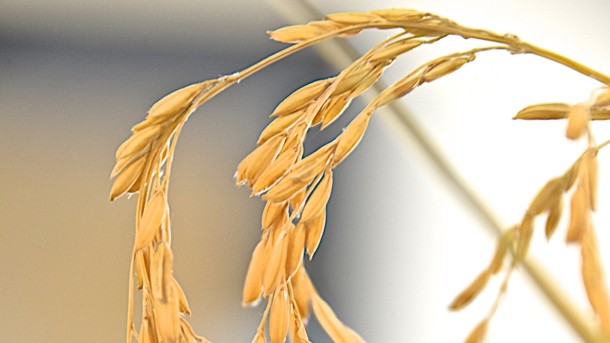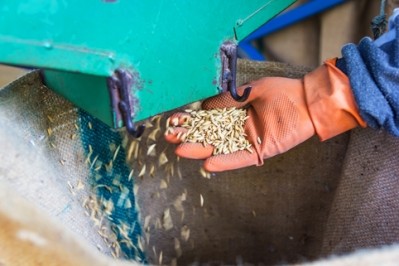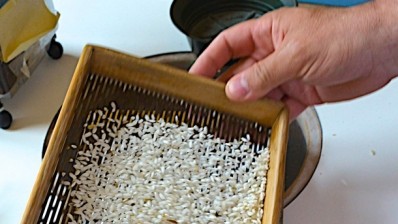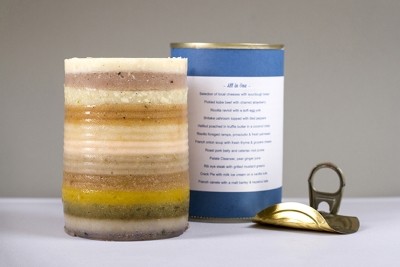Inside Italy's biggest rice producer

Stagnant water sits in rice fields on the outskirts of the tiny ancient Italian town of Robbio and gives life to millions of hungry mosquitoes. They prey on tourists, but leave locals such as Carlo Preve untouched.
Robbio sits just outside Europe’s fashion capital of Milan in the north of Italy and Preve is one of three Italian brothers running the country’s oldest and largest risotto rice milling company. Riso Gallo was founded in Genoa, Italy, in 1856 and exported milled rice to South America, before the company's facilities were destroyed in the First World War.
Riso Gallo, which is now being run by the sixth generation of Preves, was relocated to the Po Valley in 1926 where it remains in operation today. Preve and his brothers took over from their 75 year-old father, who recently stepped down from the head of the company, after they proved they were able to run the firm.
Before the brothers were allowed to join Riso Gallo, they had to get a degree, learn at least three foreign languages and work for one other major global food business.
Such high standards of preparation readied the brothers to take over the helm of the 1bn (£723M) turnover company, which exports rice and rice products to 75 countries. There are 4,000 rice growers in Italy and Riso Gallo mills more than 120,000t of rice from 1,500 farmers a year.
The Po Valley’s even temperatures are well suited to growing risotto rice, which is irrigated using the Alpine waters that come down from the mountains between April and July.
In Italy, rice is planted in April and the fields are flooded using a series of man-made channels on a two-week cycle until August, when the rice is left to ripen before harvest in September.
Most important time (Return to top)
The rice’s last two weeks in the field are the most important time, Preve says, as it needs warm, dry weather to mature. Two years ago, severe rain damaged a large chunk of Italy’s rice crop just before it was due to be harvested. As a result, there was less of it and the price rocketed from 400 (£289) a tonne in 2013 to 1,000 (£723) a tonne last year, Preve adds.
Risotto is one of Northern Italy’s most famous exports. The rice traditionally used to make the dish has high levels of starch or amylose, explains Preve, which gives it a creamy texture and helps it to remain al dente after cooking.
More than 300t of rice a day is milled at the company’s single facility in Robbio. Around 60% is risotto rice, including: carnaroli, arborio and venere (black) rice among other varieties. The remaining rice is long-grain rice, such as basmati, which is imported.
Every morning at 9:15, senior members of each department at Riso Gallo gather to check the quality of the rice milled the previous day. This includes taking rice stored in bulk bags, as well as opening packs of rice that's ready to be sent out to retailers.
“The laboratory does all of its [biological and chemical] tests, but looking at the rice is for us to learn what the product looks like and to get used to seeing the raw material from a consumer point of view,” says Preve.
“We look for broken rice, grains that shouldn’t be there, as well as other impurities,” he adds.
Thorough on milling process (Return to top)
Broken grains should account for no more than 3% of the pack’s total content, while the industry standard for a premium product is usually below 5%, he claims. The low percentage of broken grains in Riso Gallo products is as a result of its thorough milling process, he adds.
Paddy, which is what the rice crop is called before de-husking, is shipped to the factory and deposited into silos. It is then passed through rotating stones in machines to separate the husk from the rice, Preve explains. The husk is then sold to be used as fertiliser or to be burnt for energy.
The rice is then sieved several times, with each stage removing various impurities and alien grains. “At the end of this stage, we have lost 30% of the overall weight that went into the process,” he adds.
Rice is then siphoned through an optical sorter, which contains cameras to spot discoloured and diseased grains, which are blown out of the production process using air. “After this process, we lose another 10% from the total weight,” Preve adds. Any rejected rice is used in animal feed or is burnt for energy.
Other processes, such as pressure steaming and par-cooking, help to reduce the overall cooking time for the consumer. Riso Gallo manufactures quick-cook risotto rice and was the first to launch a pre-boiled rice in 1978, he claims.
If the rice wasn’t milled or hadn’t gone through further processes, it would have to be cooked for more than 40 minutes. However, the average cooking time for Riso Gallo rice is up to 20 minutes for standard milled rice and down to two minutes for quick-cook, Preve explains.
Easier to cook (Return to top)
“The whiter the rice, the more it’s been milled and the easier it is to cook. If it’s less white, then it hasn’t been milled as much and takes longer to cook but the chefs say they prefer the less milled rice, because it tastes better,” according to Preve.
Riso Gallo has over 13 product ranges, including quick-cook bag and box ranges, as well as a one-year aged gran riserva risotto rice, which is its most premium product.
However, the majority of these products are only sold in Italy. Riso Gallo exports just one third of its total output. Of the 75 countries it exports to, 12 are in the EU, with the biggest markets being France, followed by the UK, says Riso Gallo UK md Jason Morrison.
“The UK’s overall risotto rice market is worth 18M (£13M) and accounts for less than 0.5% of the 500Mt total global white rice market,” he says.
But, unlike the rest of the white rice market, risotto rice hasn’t seen any decline in sales in the UK, but has remained stagnant, Morrison adds. “I believe we’re going to see the whole of the rice market pick up in the coming years, though,” he predicts.
Growth and fighting battle (Return to top)
Although Morrison expects to see growth in the UK’s white rice sector, he is fighting a battle to get more of Riso Gallo’s products onto the shelves of the big four supermarkets, he says.
Germany-based deep discounters Aldi and Lidl have taken market share away from the UK’s big four, which have had to slim their product ranges and slash costs to compete with the discounters, resulting in a price war. This makes it difficult for Morrison to get the UK supermarkets to take on more Riso Gallo ranges.
Meanwhile, back at Riso Gallo’s head office, Preve is pumping hundreds of thousands of euros into new product development (NPD), including a range of gluten-free pasta, and snack products.
He is trying to shift the consumers’ perception of the company towards it being the ‘rice specialist’, rather than the ‘risotto specialist’, Preve adds.
Consumers, who have less time to prepare their meals and demand innovative products are driving Riso Gallo’s NPD investments, he adds.
While the final products change, the mosquito-filled paddy fields and the rice produced in them will remain the same. It is, after all, one of the region’s most famous exports, which Preve and Morrison want to see sold across the world.














